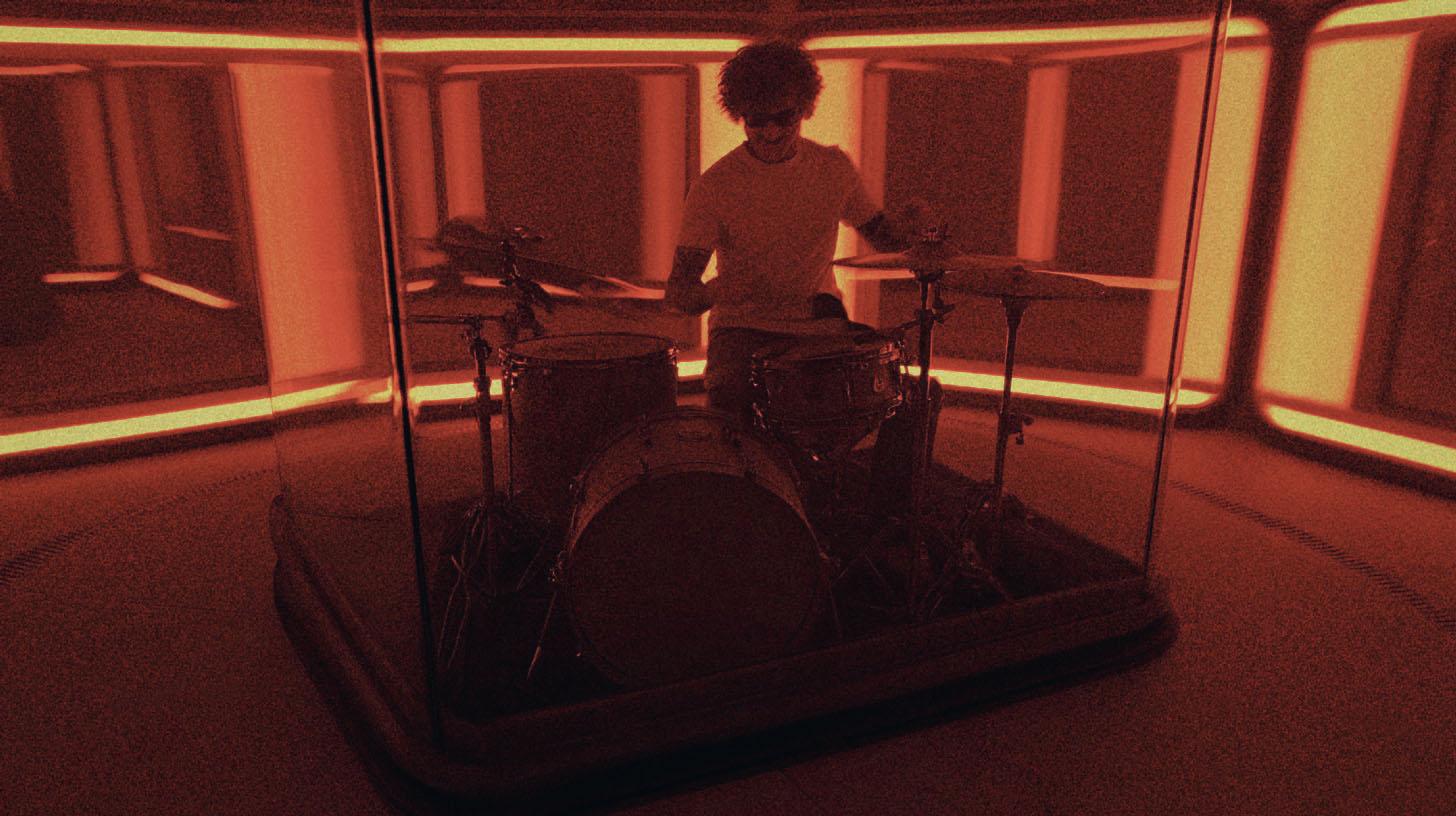
Erik Ron’s Methods for Massive Godsmack Drum Tones
Nail The Mix Staff
The drum sound on a Godsmack record is unmistakable. It’s huge, punchy, and aggressive, driving the track forward with raw power. Ever wondered how to get that larger-than-life foundation in your own mixes? We got a masterclass from producer/mixer Erik Ron as he broke down his exact approach to mixing the drums for Godsmack’s “Bulletproof.”
Forget generic presets. Erik’s method is all about surgical EQ, creative compression, and making the room mics work hard. Let’s dive into his techniques for building a world-class rock drum sound from the ground up.
The Foundation: Building the Kick Drum Punch
Like many mixers, Erik starts with the kick drum, but his approach is focused on a few key areas to get that perfect balance of low-end weight and beater attack.
Taming the “Basketball” Frequency
First things first, Erik goes after what he calls the “basketball sound.” You know the one—that boxy, hollow thud that lives somewhere between 200Hz and 300Hz. He absolutely hates it, and getting it out is priority number one.
He uses a tight EQ cut right in that 200-300Hz zone to eliminate the boxiness. This move instantly makes the kick sound tighter and more focused. From there, he adds a little bit of top-end for the clicky attack and some sub-bass for weight, along with a wider scoop in the low-mids to clean things up further. The goal is a kick that’s tight, punchy, and powerful, not a flabby basketball bouncing in your mix.
The Kick Out Secret Weapon
To get that deep, round, and gut-punching low end, Erik relies heavily on the “Kick Out” microphone. For this session, he used the classic Yamaha Subkick—essentially an NS-10 speaker wired in reverse to act as a microphone. Its entire job is to capture a massive amount of low-frequency information. By itself, the Subkick can sound pretty terrible and undefined, but blended in with the main kick mic, it provides all the sub-frequency power that listeners feel in their chest.
Blending Samples for Extra Slap
To round out the kick sound, Erik introduces a couple of samples. But he’s not replacing the real kick; he’s augmenting it. One sample is there to add some “spank” and attack, which becomes crucial in the full mix even if it’s not a standout element on its own. He blends these in carefully, making sure the real, organic kick drum performance remains the star of the show, with the samples providing reinforcement and consistency.
Crafting the Perfect Snare Crack and Thud
With the kick holding down the low end, Erik moves on to the snare, focusing on making it crack with authority while still having plenty of body.
Gating without Sucking the Life Out
To clean up the snare track and reduce hi-hat bleed, Erik uses a gate. But instead of a hard, choppy gate that can sound unnatural, he uses the McDSP Channel G plugin set to its “Expander” mode. By setting a medium release time and a moderate hold, he ensures the gate is fast enough to clean up the space between hits but slow enough to let the full, natural tail of the snare ring out. This keeps the performance dynamic and avoids making the snare sound artificially thin or clipped.
EQing for Body and Snap
Rimshots can often sound thin and tiny on their own. To counteract this, Erik uses EQ strategies to add “thud” and body back into the snare. He boosts frequencies in the 200Hz range (specifically around 112Hz and 196Hz on this track) to give the snare weight and impact. This simple move ensures the snare has both a piercing top-end crack and a powerful low-end punch that can stand up to heavy guitars.
Even though he EQ’d the snare on the way in during tracking, he emphasizes that you should keep tweaking in the mix until it’s right. There are no rules against EQing something twice if it needs it.
Subtle Compression and Reverb
For snare compression, the key is subtlety. Erik uses the McDSP 6030 Ultimate Compressor to just “kiss” the peaks, gently controlling the dynamics without squashing the life out of the track. This “less is more” approach is a great starting point.
For space, he sends the snare to a reverb bus running a “Large Natural Studio” preset. The trick here is to shorten the reverb time. If it’s too long, you end up with a washy, ‘80s hair metal sound. By keeping the decay shorter, he adds width and dimension while keeping the snare tight and modern.
Creating Epic Space with Room Mics
This is where the drum kit goes from sounding good to sounding massive. Erik’s philosophy for room mics isn’t about pristine clarity; it’s about creating an explosive sense of energy and hair.
Processing Your Main Room Mics
The room tracks for this session were already printed with some compression from an Empirical Labs Distressor, but Erik takes it much further in the mix.
- Heavy Filtering: He filters out a significant amount of the high end. He doesn’t need cymbal wash from his room mics; he has overheads for that. The rooms are all about the “guttural” low-mids and the “hair” on the kit.
- Serious Compression: He compresses the room mics heavily to make them pump and breathe with the performance. The goal is to use the rooms as an effect, blending them under the close mics to add depth and sustain. This aggressive pumping helps glue the whole kit together and makes it feel explosive.
The Secret Width Trick
As a final touch, Erik adds another layer of subtle space. He sets up a reverb send with a “Large Dark Room” setting, filters out the highs, and blends it in very low in the mix (around -20dB). You can barely hear it on its own, but when it’s there, it adds a touch of extra width and depth that makes the entire kit feel more three-dimensional.

100+ Insanely Detailed Mixing Tutorials
We leave absolutely nothing out, showing you every single step
Bring the Godsmack Power to Your Mixes
Building a drum sound like Godsmack’s is a masterclass in intentional processing. It’s about knowing what you want from each element:
- Kick: Punchy and tight, free of boxiness.
- Snare: Full of crack and body.
- Rooms: Energetic, pumpy, and full of gritty character.
These are the exact kinds of techniques that separate amateur mixes from pro-level productions. This is just a glimpse of the process, but what if you could watch Erik Ron mix the entire “Bulletproof” track from start to finish?
Godsmack on Nail The Mix
Erik Ron mixes "Bulletproof"
Get the Session
At Nail The Mix, you can do just that. We give you the full multitracks from Godsmack so you can follow along as Erik builds this powerhouse mix, explaining every plugin, setting, and decision. Get access to the Godsmack session with Erik Ron and see exactly how these tones are crafted and balanced with bass, guitars, and vocals.
If you’re ready to move beyond presets and a-b-c tutorials, it’s time to unlock your sound and learn from the pros who are defining the sound of modern rock and metal.
Get a new set of multi-tracks every month from a world-class artist, a livestream with the producer who mixed it, 100+ tutorials, our exclusive plugins and more
Get Started for $1




